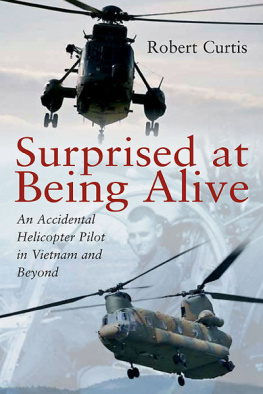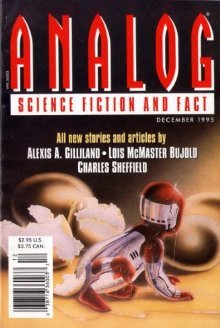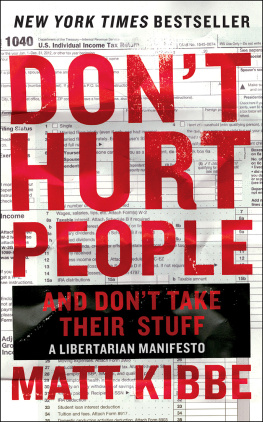Curtis - Dont Look, Dont Touch, Dont Eat: The Science Behind Revulsion
Here you can read online Curtis - Dont Look, Dont Touch, Dont Eat: The Science Behind Revulsion full text of the book (entire story) in english for free. Download pdf and epub, get meaning, cover and reviews about this ebook. City: London;Chicago;Ill, year: 2013, publisher: University of Chicago Press, genre: Romance novel. Description of the work, (preface) as well as reviews are available. Best literature library LitArk.com created for fans of good reading and offers a wide selection of genres:
Romance novel
Science fiction
Adventure
Detective
Science
History
Home and family
Prose
Art
Politics
Computer
Non-fiction
Religion
Business
Children
Humor
Choose a favorite category and find really read worthwhile books. Enjoy immersion in the world of imagination, feel the emotions of the characters or learn something new for yourself, make an fascinating discovery.

- Book:Dont Look, Dont Touch, Dont Eat: The Science Behind Revulsion
- Author:
- Publisher:University of Chicago Press
- Genre:
- Year:2013
- City:London;Chicago;Ill
- Rating:3 / 5
- Favourites:Add to favourites
- Your mark:
- 60
- 1
- 2
- 3
- 4
- 5
Dont Look, Dont Touch, Dont Eat: The Science Behind Revulsion: summary, description and annotation
We offer to read an annotation, description, summary or preface (depends on what the author of the book "Dont Look, Dont Touch, Dont Eat: The Science Behind Revulsion" wrote himself). If you haven't found the necessary information about the book — write in the comments, we will try to find it.
Dont Look, Dont Touch, Dont Eat: The Science Behind Revulsion — read online for free the complete book (whole text) full work
Below is the text of the book, divided by pages. System saving the place of the last page read, allows you to conveniently read the book "Dont Look, Dont Touch, Dont Eat: The Science Behind Revulsion" online for free, without having to search again every time where you left off. Put a bookmark, and you can go to the page where you finished reading at any time.
Font size:
Interval:
Bookmark:
VALERIE CURTIS is director of the Hygiene Centre at the London School of Hygiene and Tropical Medicine.
The University of Chicago Press, Chicago 60637
The University of Chicago Press, Ltd., London
2013 by The University of Chicago
All rights reserved. Published 2013.
Printed in the United States of America
22 21 20 19 18 17 16 15 14 13 1 2 3 4 5
ISBN-13: 978-0-226-13133-7 (cloth)
ISBN-13: 978-0-226-08910-2 (e-book)
DOI: 10.7208/chicago/9780226089102.001.0001
Library of Congress Cataloging-in-Publication Data
Curtis, Valerie, author.
Dont look, dont touch, dont eat: the science behind revulsion / Valerie Curtis.
pages; cm
ISBN 978-0-226-13133-7 (cloth: alkaline paper)ISBN 978-0-226-08910-2 (e-book)
1. Aversion. 2. AversionSocial aspects. 3. HygienePsychological aspects. I. Title.
BF575.A886C87 2013
152.4dc23 2013017713
 This paper meets the requirements of ANSI/NISO Z39.48-1992 (Permanence of Paper).
This paper meets the requirements of ANSI/NISO Z39.48-1992 (Permanence of Paper).
Valerie Curtis
DONT LOOK, DONT TOUCH, DONT EAT
The Science Behind Revulsion
The University of Chicago Press
Chicago and London
CONTENTS
PREFACE
UNWEAVING THE RAINBOW
Feces, urine, toilets, sweat, menstrual blood, spilt blood, cut hair, impurities of childbirth, vomit, smell of urine, open wound, saliva, dirty feet, eating with dirty hands, food cooked while menstruating, bad breath, smelly person, yellow teeth, nose picking, dirty nails, clothes that have been worn, flies, maggots, lice, mice, mouse in a curry, rats, stray dog, meat, fish, pigs, fish smell, dog or cat saliva, flies on feces, liquid animal dung, soap that has been used in the latrine, dead rat, rotting flesh, parasitized meat, wet cloths, stickiness, decaying waste, garbage dump, sick person, hospital waiting rooms, beggars, touching someone of lower caste, crowded trains, alcohol, nudity, kissing in public, betrayal.
From fifty essays on disgust by teenage girls in Lucknow, India
Read this collection of the foul, the fetid, and the revolting carefully. Savor each word; imagine each object. How does this make you feel? The list comes from a set of essays on the subject of disgust, written for me by teenage girls in the city of Lucknow. I happened to be having breakfast while I was working on it. Partway through I had to put my spoon down; by the last essay my stomach was churning. Perhaps you feel the same sensations that I did: a curdling of the tongue, a clamminess of the hands, a slowing of the heartbeat? Maybe you also pulled down the sides of your mouth and wrinkled your nose in the classic facial expression of disgust. If you were dining while reading this list, as I was, you will probably also have set aside your plate.
Disgusts Puzzle
Why should this simple collection of words on a page produce so visceral a reaction? What is there in this list of the odorous, the grubby, the leftover, the discarded, and the immoral that is so powerful it can leap from a page to contaminate a bowl of cereal? What links all of these disparate phenomenafrom sweat, to lice, to sick people, to betrayalapart from the fact that they disgust us? And what is the purpose of this unpleasant feelingwhat good does it do us?
All humans, from India to Africa to the USA, feel disgust, and, with a few exceptions, all humans feel disgusted about more or less the same things. We are disgusted not just by particular nasty organic objects and substances, but also by hygienic lapses, and by indecency, wickedness, and hypocrisy. We also seem to suffer from what might be called a metaphysical disgust, an aversion to violations of the things that we hold sacred, our social rules, and our laws.
Disgust pushes us away; it is a voice in the head telling us to avoid the nasty, the stinky, the putrid, and the offensive. Yet at the same time it fascinates. Freak shows at fairs have always been a draw, as have been body parts in jars. The news industry thrives on our desire for gory and ghastly details, and bloodsucking vampires, slimy aliens, and deformed monsters fuel the horror fiction and film industries. Some contemporary artists like to add dung to their works, and the more disgusting the tasks that are given to celebrities in TV game shows, the higher the ratings climb. It seems that we like to take our emotions out for a spin; we cant help taking a second look at something that makes us squirm.
Disgust has always been fascinating, but it has only recently become an object of serious study. There is now a miniboom in books, papers, and conferences on pollution and purity, disgust and dirt. Classicists, historians, humanities students, anthropologists, cultural and legal scholars, bioethicists, philosophers, marketers, and psychologists are all wrestling with this previously taboo topic. The total number of books on disgust has doubled since 2011, with four new volumes appearing with titles such as Yuck! and Thats Disgusting!
Social psychologists have reported the results of experiments that show disgust in operation when humans make moral choices. Disgust, it turns out, is a thread that is woven right through our individual and social lives; indeed, without this thread societies would fall apart.
Sorting Out the Disgust Story
However, while there is now a marvelous flowering of work on disgust, the topic does not yet have solid roots. Disgust studies grow in a motley compost of observation, out-of-date theory, and speculation. Some students think disgust emerges out of social norms and culture, others find magical thinking about contamination at its roots, others claim that it grows out of an innate distaste for bad food, and many subscribe to the view that it serves to defend our psychesto keep us from too much awareness of the unpleasant facts of our animal nature and of our ultimate destiny, which is to become organic waste material ourselves.
Disgust certainly is puzzling; it is so powerful and sometimes so apparently irrational that it can seem magical. To find it playing so many roles in so many spheres of life seems to defeat scientific explanation. Yet science and the scientific approach can help us make sense of this messy and multifarious topic. We can systematically trace the ancient origins of disgust back to our earliest animal ancestors. We can hypothesize about disgusts functions and its component mental structures and test these hypotheses in rigorous experiments. We can unpick the story of how and why disgust plays a role in our moral behavior. And we can use it to unweave the rainbow: to find the strands that can make sense of age-old questions such as how our ancient biological natures have influenced the content of our cultures, and how our cultures have, in turn, influenced our natures.
The story of disgust needs to be retold, this time from the start, and in the right order. Therefore this book starts with disgusts ancient function as a system that bestows on animals the ability to avoid parasitesthose ubiquitous body snatchers that hitch lifts and sneak free lunches from their hosts. As the story unfolds, we see how invertebrates, vertebrates, mammals, and primates evolved the behavioral capacities needed to deal with threats from parasites and pathogens. Parasite-avoidance behavior is everywhere in the evolutionary tree of life; humans are but one branch, with more in common with our animal cousins than we may like to think.
Humans, however, have also developed some special capacities that are beyond other animals. We are probably the only species that can track parasites by using our imaginationsby conjuring pictures of spreading waves of contagion in our minds. We are probably also the only species to be able to imagine ourselves being disgusted in the future. This has huge evolutionary benefitswe can stay home when theres plague about to avoid encountering sick people. We can choose to put food in the refrigerator today because we can imagine a rotten mess tomorrow. Humans are also the only species with mannerssets of behavioral rules that protect one another, the absence of which occasions disgust and the punishment of the offender. Finally, humans have found a novel use for disgust: employing it to punish social parasitesshunning and excluding the thief, the abuser, and the cheat from society. Recent experiments suggest that disgust may have played a fundamental role in the evolution of morality. Moral disgust has a strong claim to be essential to the human ability to cooperate on a mass scale, which is the main reason that
Next pageFont size:
Interval:
Bookmark:
Similar books «Dont Look, Dont Touch, Dont Eat: The Science Behind Revulsion»
Look at similar books to Dont Look, Dont Touch, Dont Eat: The Science Behind Revulsion. We have selected literature similar in name and meaning in the hope of providing readers with more options to find new, interesting, not yet read works.
Discussion, reviews of the book Dont Look, Dont Touch, Dont Eat: The Science Behind Revulsion and just readers' own opinions. Leave your comments, write what you think about the work, its meaning or the main characters. Specify what exactly you liked and what you didn't like, and why you think so.
















